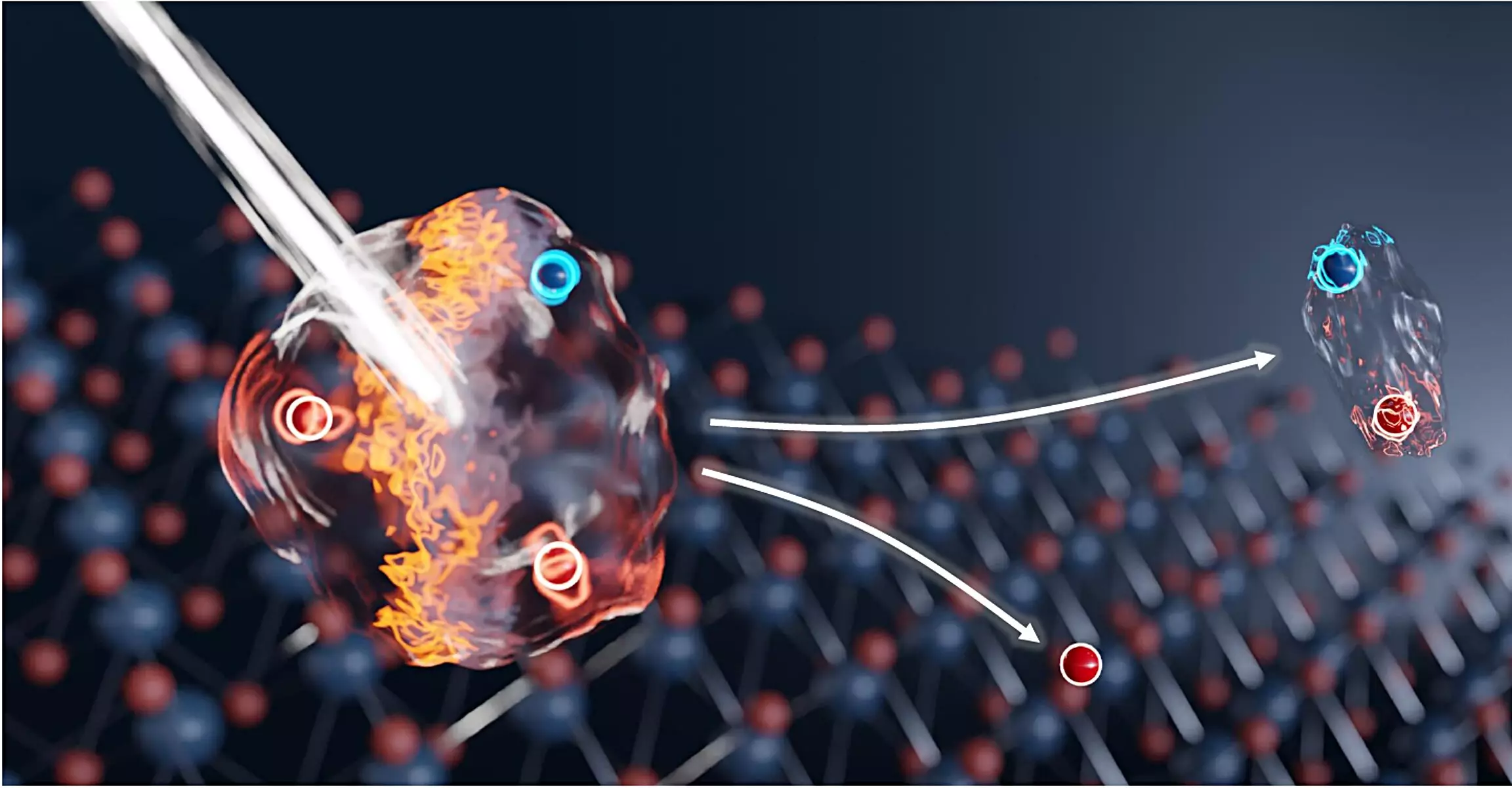In recent years, the field of material science has made remarkable strides, particularly in the realm of two-dimensional (2D) materials. Comprising merely a few atomic layers, these ultra-thin substances are poised to revolutionize electronics and quantum technology. A pioneering investigation spearheaded by the Technical University of Dresden, in collaboration with the Helmholtz-Zentrum Dresden-Rossendorf (HZDR), has recently unveiled significant advancements in the manipulation of these materials. This groundbreaking research, which was published in *Nature Photonics*, demonstrates the potential for exceptional switching capabilities between charged and electrically neutral luminescent particles within 2D materials.
At the heart of this research is a deep dive into excitons and trions—key players in the unique behavior of 2D semiconductors. When an electron absorbs energy, it leaves its original position, creating both a negatively charged electron and a positively charged ‘hole’—the result is a bound ensemble known as an exciton. This interaction becomes even more intriguing when another nearby electron is drawn into the mix, resulting in a trion, characterized by its enhanced electrical charge and strong luminescence. The interplay between excitons and trions has been an area of great interest due to its implications for future technological applications such as advanced data processing and sensor development.
Earlier experiments had established the feasibility of switching between excitons and trions, albeit with relatively slow speeds. Under the leadership of Professor Alexey Chernikov from TU Dresden and HZDR physicist Dr. Stephan Winnerl, the team has successfully accelerated this switching process, achieving unprecedented speeds. Conducted under the auspices of the Würzburg-Dresden Cluster of Excellence on Complexity and Topology in Quantum Materials (ct.qmat), this study has opened new avenues for both fundamental research and practical applications.
The researchers employed the FELBE free-electron laser to unleash powerful terahertz pulses, which fall between radio frequency and near-infrared wavelengths. Initially, they directed short laser pulses at an atomically thin layer of molybdenum diselenide cooled to cryogenic temperatures, generating excitons that rapidly evolved into trions. The innovative use of terahertz radiation allowed the scientists to break the tenuous bond between excitons and electrons at a breakneck pace. The process of switching back to excitons occurred within just a few picoseconds—almost a thousand times quicker than methods used previously.
The implications of this leap in switching speed are profound. Fast switching is crucial for the development of future technologies, particularly in rapidly evolving fields like quantum computing and advanced optical electronics. The ability to manipulate excitons and trions at such high rates could lead to novel modulation techniques that harness both electronic and optical control simultaneously.
Perspectives open for research could entail expanding this methodology to include various complex electronic states and material platforms, inviting exciting interactions among particles. Concepts previously relegated to theoretical discussions, like exotic quantum states arising from intense particle interactions, may soon become tangible realities, with implications extending even to applications at room temperature.
Moreover, this research holds particular promise for the domain of sensor technology. The observed rapid switching processes could inspire new types of modulators that are not only compact but can also efficiently manage optically encoded information through electronic means. This could pave the way for a new generation of devices capable of functioning within the technologically significant terahertz frequency range, with adjustable capabilities that could result in highly detailed terahertz cameras featuring large pixel arrays.
Chernikov notes that this novel method could lead to detectors that convert the dynamics of trion and exciton formation into images for practical application, harnessing even minimal intensity for activation. As such, the consequential shifts in near-infrared light emitted during the conversion process can facilitate straightforward detection and imaging using existing advanced technology.
The groundbreaking research from TU Dresden and HZDR uncovers a new frontier in 2D material science. By significantly enhancing the speed of exciton-trion switching, this work not only positions researchers on the cusp of numerous potential applications—including imaging, data processing, and sensor technology—but also lays the groundwork for future explorations into complex quantum states. As we continue to delve deeper into this expansive universe of possibilities, the advancements prompted by these findings promise to redefine our technological landscape.


Leave a Reply